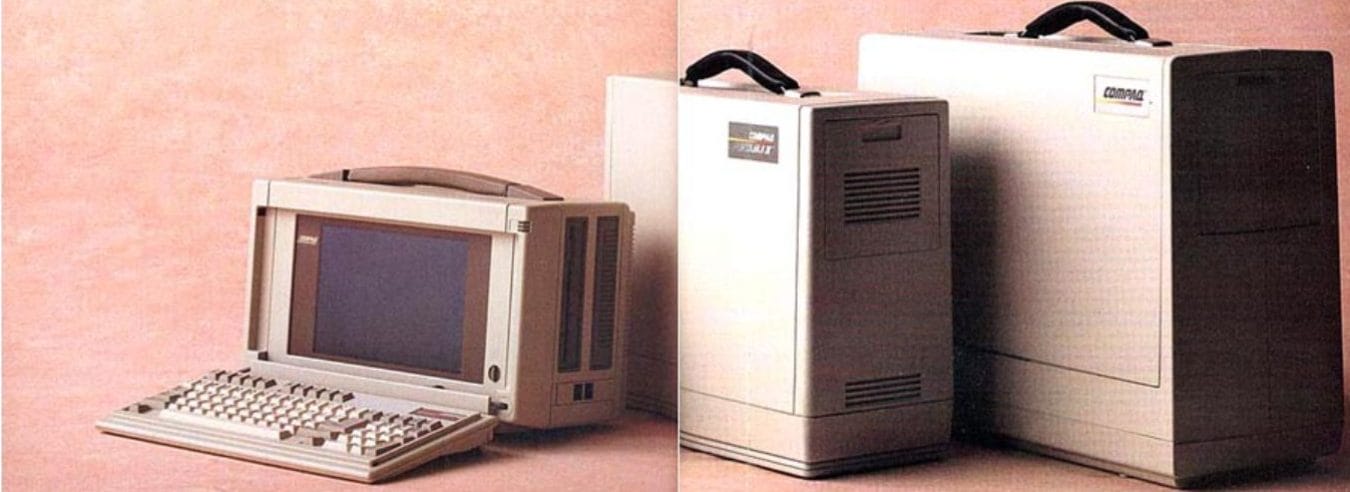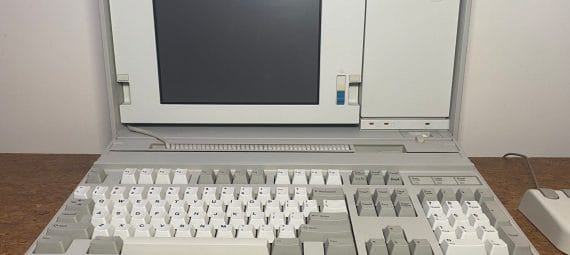IBM computers of the late ’80s and early 90’s certainly has a distinct aesthetic – beige and monolithic, yet elegant and sophisticated. You knew when you saw an IBM computer, and you knew it meant business (literally).

With IBM Model 30/35 in background from 1993 classic, Mrs. Doubtfire
IBM computers were made for big-businesses, governments, and professionals, and the IBM P75 was no different. In fact, I would say the IBM P75 is perhaps the most specialized computer out of the entire PS/2 line. Looking at its exterior, the nondescript box shape of the P75 gives little away as to what it actually is – I’m sure if someone put this on a desk in 1990, some may have thought it to be some sort of futuristic briefcase. Perhaps those who had used an IBM would have seen the badge or recognize the color and guess that within would be a business computer.
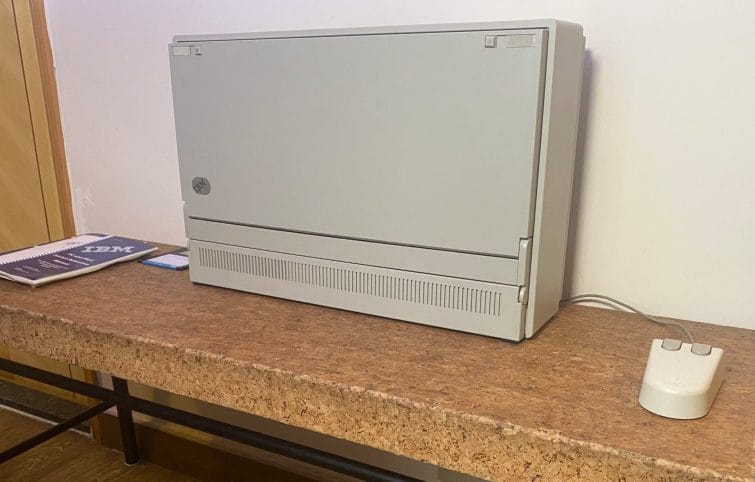
Opening up the P75 reveals the treasure within – a full-travel IBM clicky keyboard, a 640×480 resolution VGA gas-plasma screen, and a floppy drive.
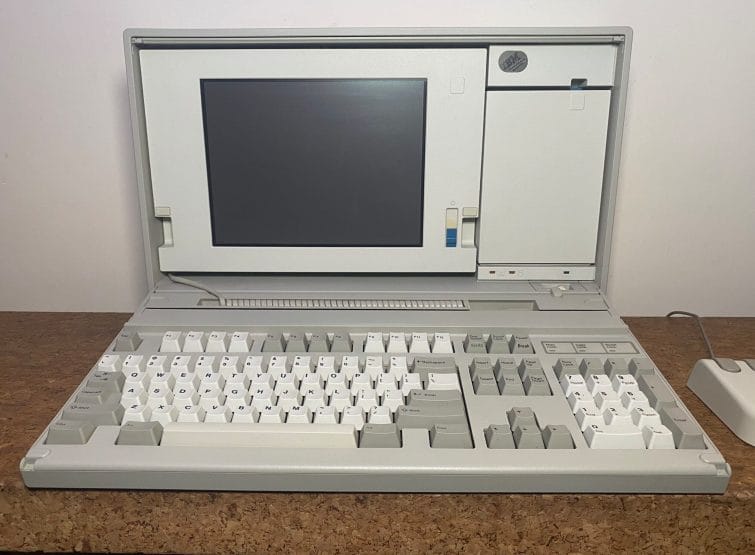
The screen, keyboard, and floppy disk drive shown above are in their stowed positions, but all three can be released for use, and the keyboard and screen can have their positions adjusted for comfort.

Here we can see the screen in the stowed position, flat and flush against the vertical case. A gentle pull on both sides of the screen with both hands pulling on the indentations on the screen’s edges releases it, allowing it to be pulled forward and the viewing angle to be adjusted.
NOTE: if you have an IBM P70 or a P75, be *very* careful when you stow the screen. Releasing and stowing the screen from the frame of the computer almost feels a bit destructive in of itself as it requires a bit of force to pull the monitor out – but when you stow the monitor, always push the bottom of the monitor in first before you push in the top of the monitor to lock it in place. Not doing this will break the hinges!
The floppy disk is also similarly stowed and un-stowed – a gentle push on the raised square on the right releases the drive, and it gracefully swings open for you to insert a floppy disk. A very elegant and space-saving design that manages to cram a full desktop package into a standard briefcase. This compact packing of components is even more noticeable when looking at the interior of the P75.

Moving above the unit, we can see the thickness of the computer – definitely not something that you would want to commute to work with on a daily basis. However, if we consider that it is a complete 486 computer, packing 4 MCA-bus expansion slots that were released in 1990 – one can accept its dimensions (and I dare say even admire the design!)

The rear of the unit is similarly well-designed, simple yet functional. Starting at the left, we have the power socket, which is supplies the IBM P75 with A/C electricity through an IEC C14 socket, the PSU accepting 100-240v 3.0A 50-60Hz. At the top of the case, we have a recess to stow the solid metal carrying handle. To the right of that, we have the I/O ports, hidden away with a swinging door. The swinging door actually has a door within a door, which slides up and down to allow for cables to access the various ports. To the left of the unit, we have the standard computer power socket and vents for the exhaust fan.
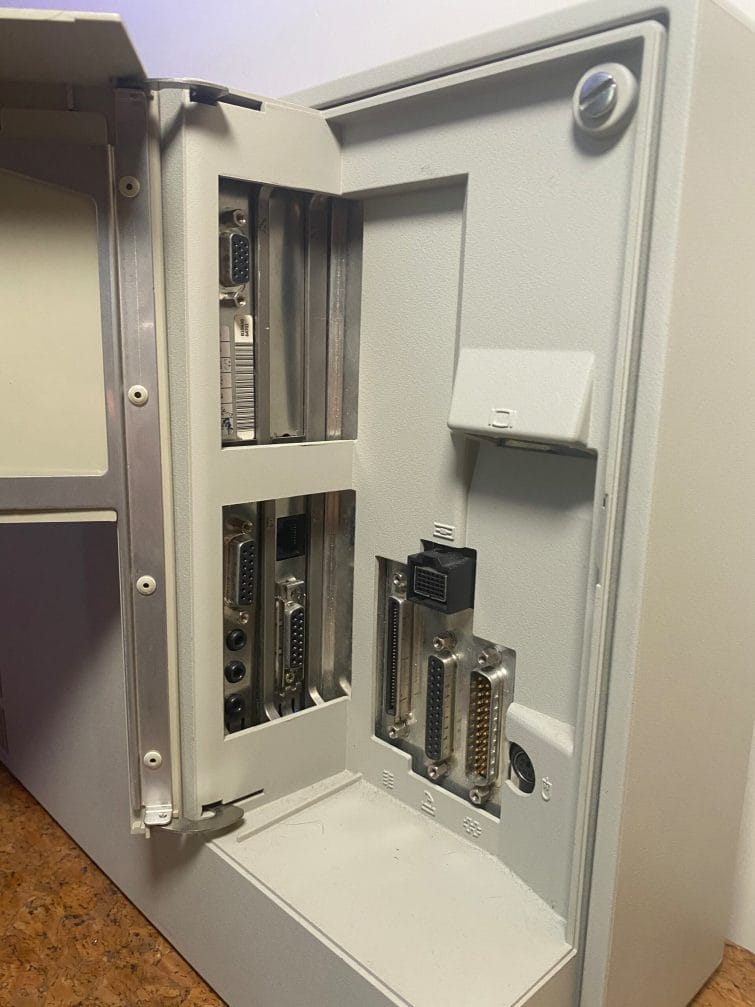
Taking a closer look at the I/O port and expansion card area behind the door, we can see that the P75 has all its desktop counterparts’ ports. From left to right, we have a SCSI port, an IBM 5.25 floppy disk drive port, a parallel port, a serial port, and a PS/2 mouse port. Yes – the same PS/2 port that came in green and purple on all computers in the ’90s and into the 2000s. This recessed area also allows you to coil up and store the power cable when the unit is in transit.

Taking a look down under – we can see the very official-looking IBM sticker with the model number and manufacturing date – my unit was made in 1991 – hopefully meaning that whoever purchased it paid a little less than the $18,500 sticker price when it was new in 1990. IBM also very proudly displays their FCC Class B certification for a reason. It was meeting the standards of this certification that made the IBM P75 the first 486 based portable for “legal sale and use” in the United States. Other manufacturers, particularly in Asia and Europe, likely had 486-class portables on the market, but they could not be sold in the U.S. as they did not have the FCC Class B certification.

Here is a shot for all you keyboard aficionados out there – and I agree, the keyboard is fabulous to type on. It is remarkable how lightweight they have managed to make the keyboard and still kept it full size. I imagine an IBM model M keyboard would be more “clicky,” but still, this keyboard gives great tactile feedback (much better than any modern “flat-key” keyboard, that’s for sure). As you can see above, the keyboard can be fully detached from the computer (with its connectors to the main unit functioning as legs to prop up the keyboard). The 14 inch rolled coil cable connecting the keyboard and the P75 can be seen in the down in the gap between the two.
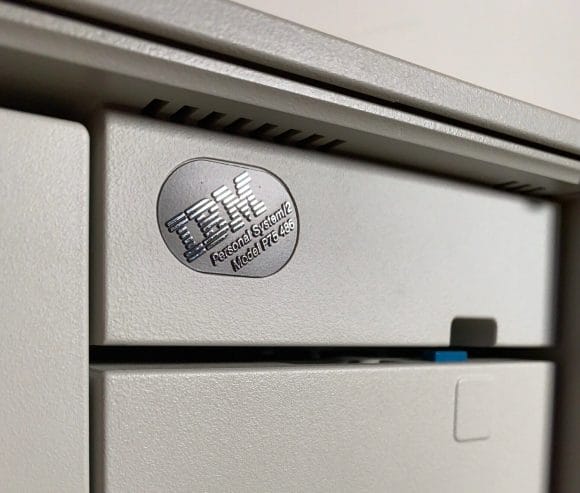
There is just something special about IBM computers – even the logo invokes images of big business and ambition for global domination. Though with the passing of time, the logo now serves as a reminder of IBM’s yesteryears. A quest for personal computer domination – a dream that did not quite pan out as expected.

And there you have it, a tour round the exterior of the IBM P75 – a computer for those who needed portability and power, at any cost.
Exactly who would buy an $18,500 (that’s $37,500 in 2020 dollars) suitcase computer in 1990? See: The Most Powerful Portable – IBM P75
Check out what sets the IBM P75 apart: Under The Hood – Looking Inside the IBM P75
Take a Closer Look at the IBM P75:
- The Most Powerful Portable – IBM P75
- Take a Look Around (The Outside)
- But wait, there’s more – Under the Hood (Interior)
- Tips & Tricks (Restoration: CMOS Battery, Getting POST)
- Booting Up & Configuring the IBM P75
